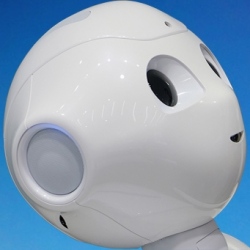
Robot avatars have been a sci-fi staple for decades. But, as usual, our imagination outstrips reality. The best commercially available “avatars” are telepresence bots, which are little more than iPads on wheels, while cutting-edge humanoid robots look flashy but struggle to keep their balance.
The X Prize Foundation wants to change this, and today, it announced its latest challenge: building “real-world avatars” by 2021.
As per the foundation’s modus operandi, the goal here is to spur development by offering teams cash prizes. Researchers will sign up to enter the prize and develop avatars (the deadline for entry is October 31st) and will have to meet certain criteria. There will be two milestone prizes in 2020 and 2021 worth $1 million each, and one grand prize worth $8 million.
The foundation has not detailed the exact challenges and specifications these avatars will have to meet, but the broad strokes are ambitious. Teams will have to build avatars that will enable users to “remotely see, hear, touch and interact with physical environments and other people” from 100 kilometers away.
These robot avatars must also be able to “execute tasks across a variety of real-world scenarios,” with the foundation citing future applications like helping provide “critical care and deploy immediate emergency response in natural disaster.” The prize is sponsored by Japanese airline ANA.
Speaking to The Verge, X Prize Foundation CEO Marcus Shingles said the goal was to create a truly multipurpose robot. We’ve already developed robots for specialized tasks like deep-sea mining and moving patients around hospitals, but the hard part is creating a machine that can take on a variety of tasks, just like a human.
“It’s intended to be multi-purpose,” says Shingles. “Imagine a remote village with a single avatar system that provides utility to everyone in the village. The robot could be controlled by different operators to repair solar panels, help with carpentry, and lots of other jobs.”
